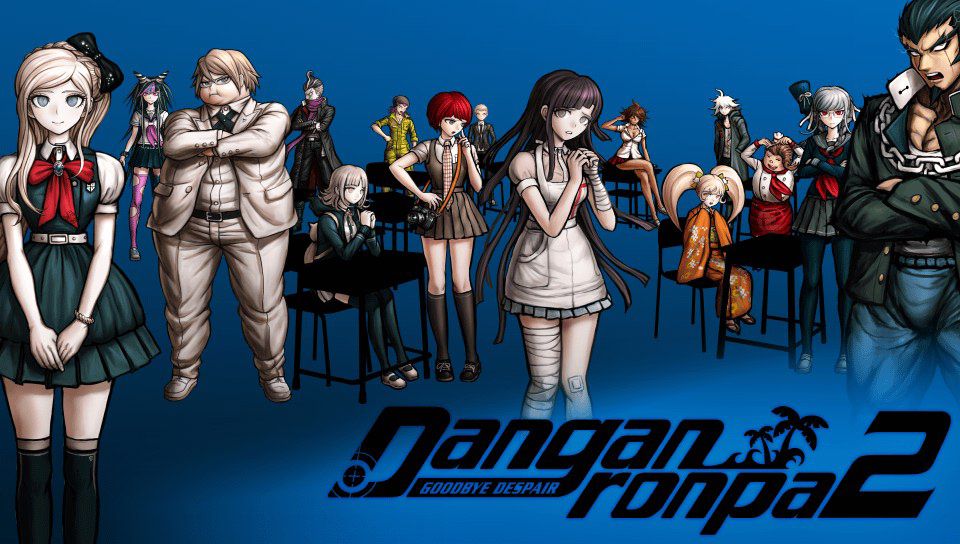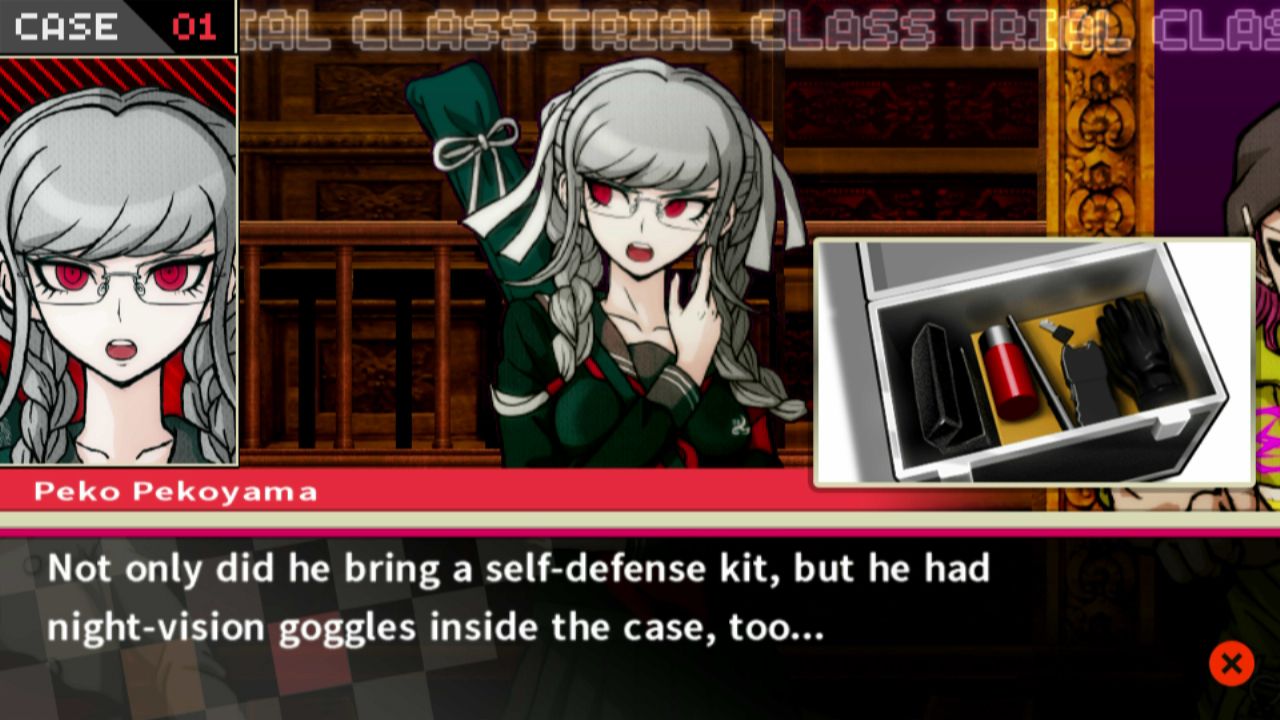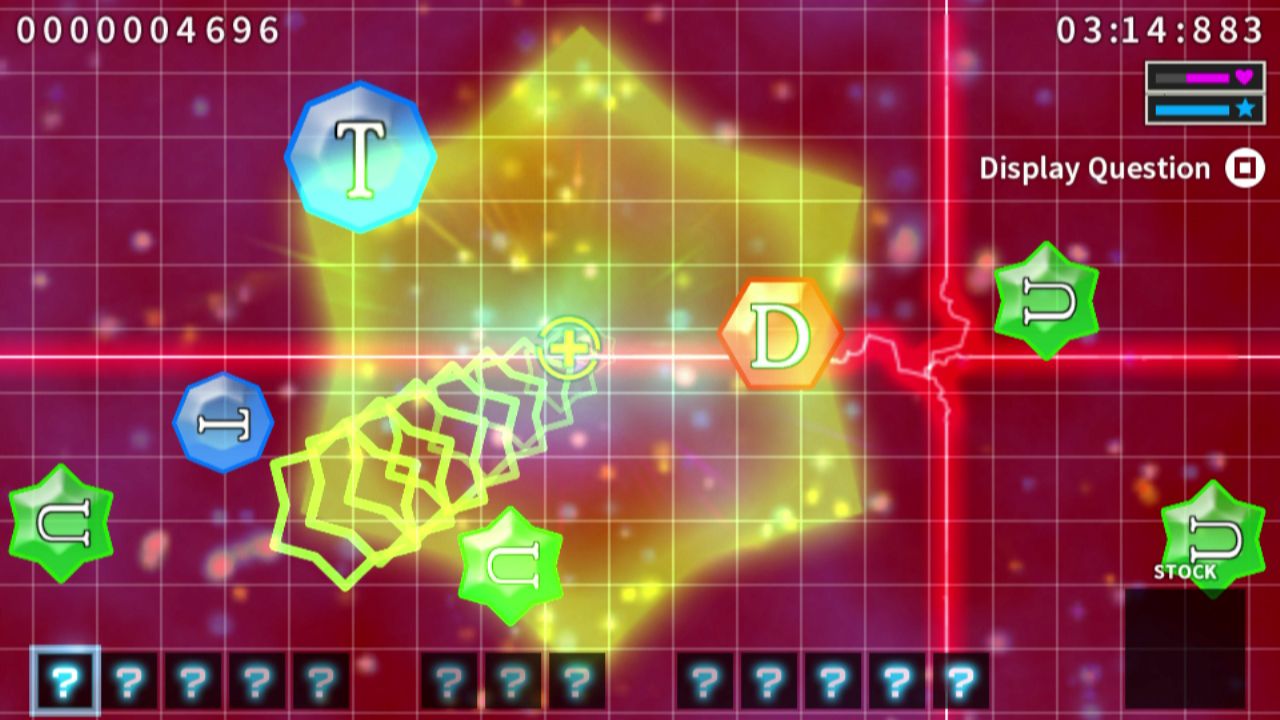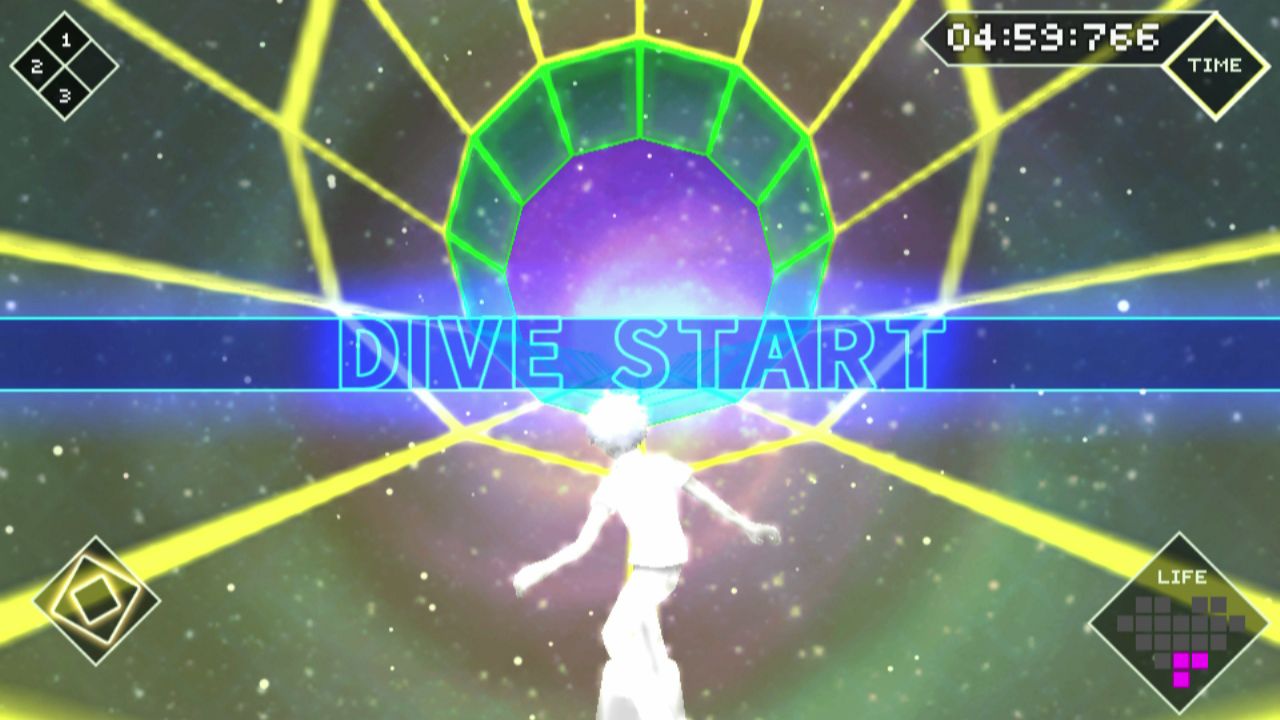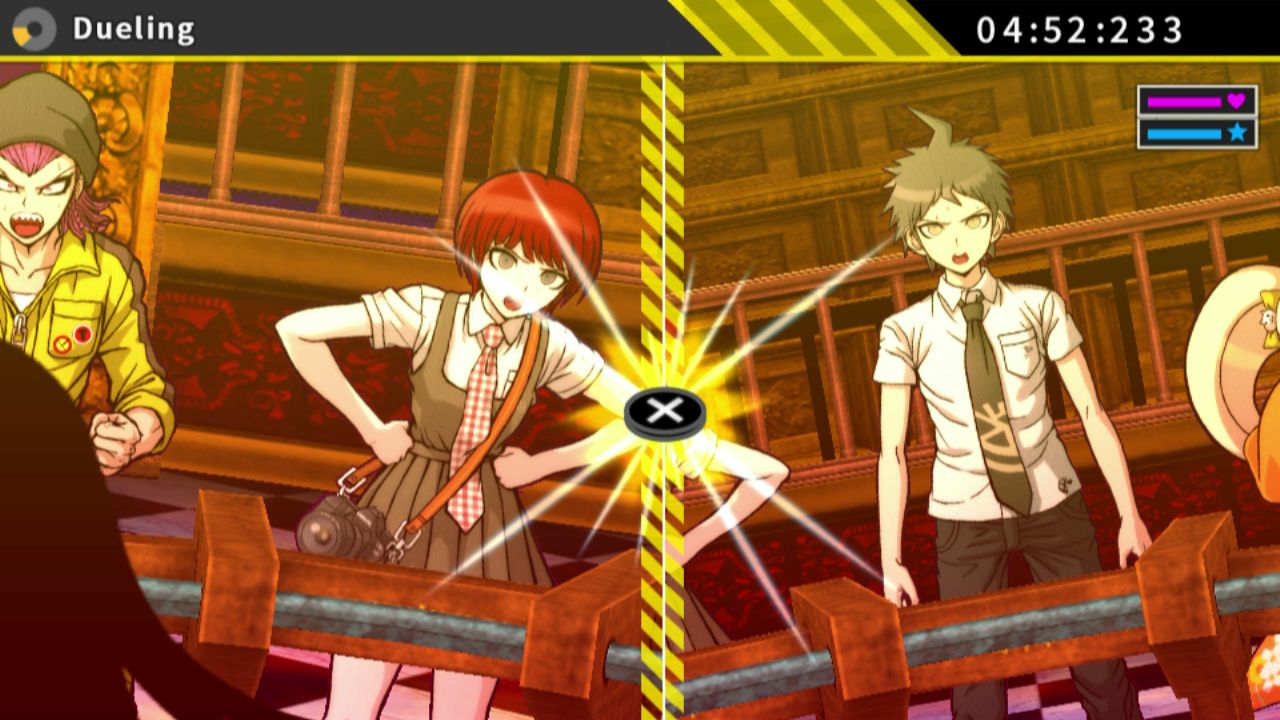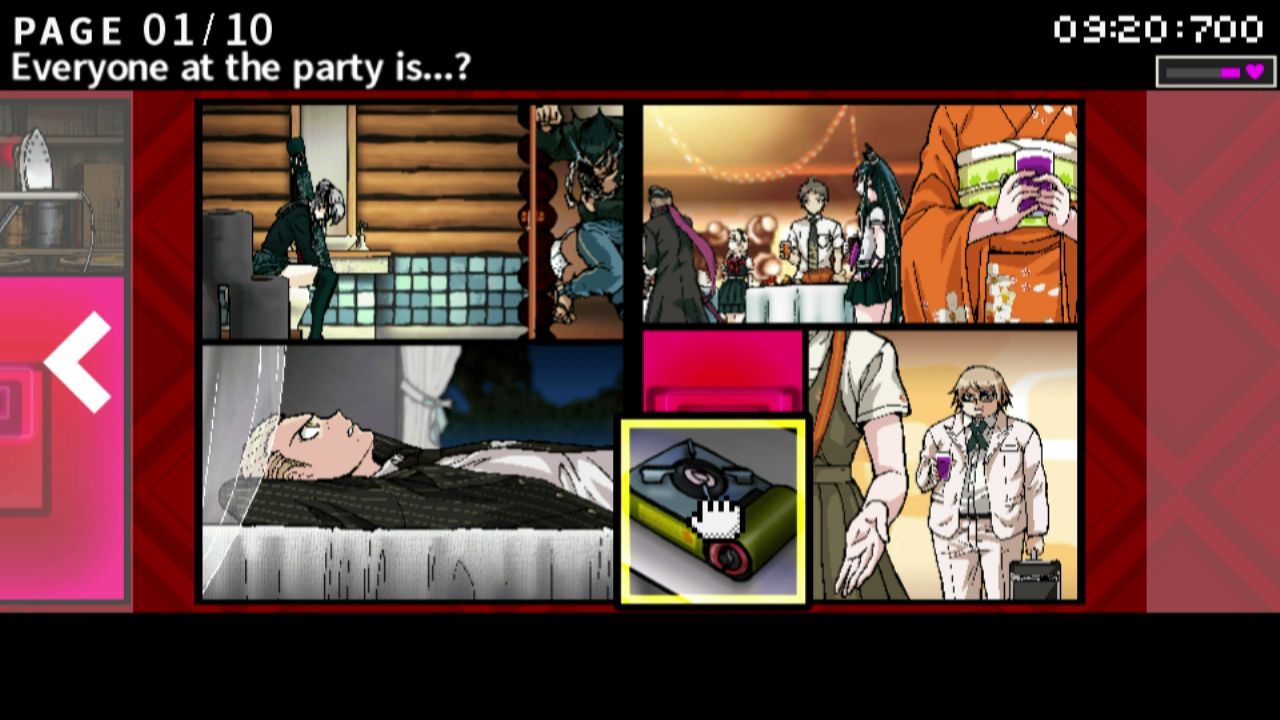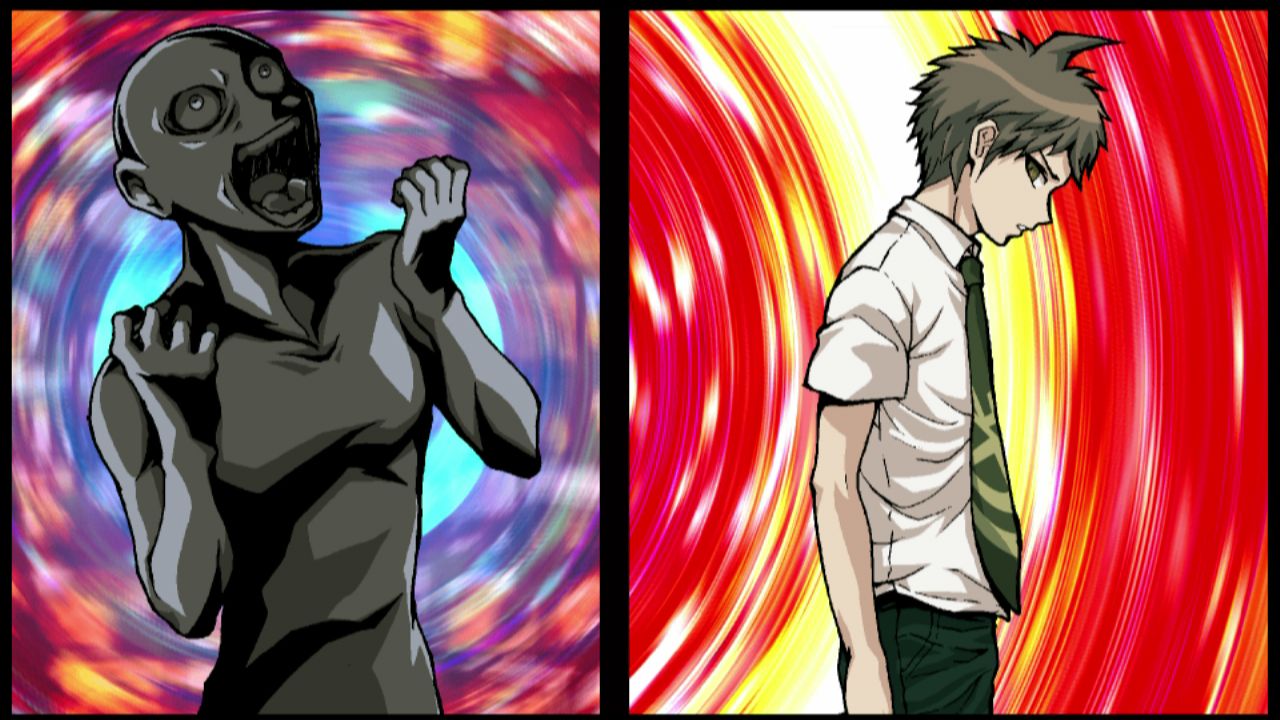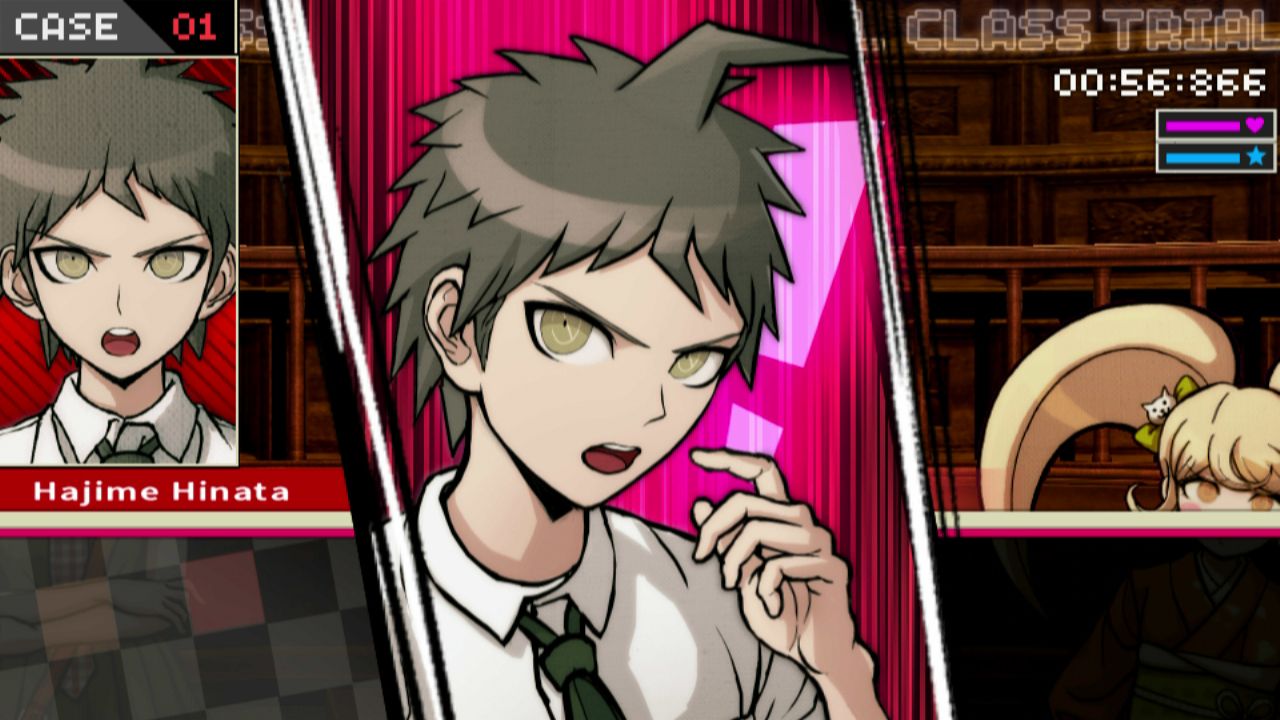Imagine bright and warm rays of sunshine, a gentle sea breeze washing over your face, the cool and crystal clear water. Coconut trees. Sandy beaches. The perfect tropical island.
That is the setting of the sequel to Danganronpa: Trigger Happy Havoc, a beautiful and uninhabited paradise that brings nothing but relaxation and good times. Oh, and violent homicide.
Danganronpa 2: Goodbye Despair is one of those titles that's not content to be a simple rehash of its predecessor. Instead it cranks the story and gameplay up to eleven, providing both veterans and newcomers with a huge challenge spike while shining on the issue of high school students killing each other in a whole new light.
Note: If you haven't played Danganronpa: Trigger Happy Havoc yet, this review will be a bit hard to follow as it discusses mechanics found in that game as well as the sequel (you can read my review of the first game here). Additionally, playing this game without playing the first title is possible but will spoil plot points later on.
You play as Hajime Hinata, a student of Hope's Peak Academy who -- like Makoto Naegi before him -- is thrust in the impossible situation of having to survive in a zero-sum game of the nefarious Monokuma's making. The overall goal is the same: a student that kills another student is dubbed the Blackened and an investigation of the crime scene ensues to collect clues, known as Truth Bullets, used in the Class Trial.
After a set period of time, the remaining students are whisked away to a room for said Class Trial and must deliberate among themselves in order to find the Blackened; if they choose right then only the Blackened is executed but if they make the wrong choice then everyone else is killed and the Blackened can leave Jaberwock Island.
The first noticeable change is the angle of attack in terms of plot. Trigger Happy Havoc was more dependent on the shock value of the horrible situation to carry it through the prologue and first chapter and it worked well. Goodbye Despair, however, could not depend on such tactics and instead chose to make things much worse. The students are taken to this island but by a benevolent bunny called Usami, who just wants them to be happy and live carefree lives. Everyone soon slowly bonds and even the uptight Hajime eventually wavers. Of course the savvy players know that this peace cannot last and end up anxiously awaiting for the inevitable storm on the horizon.
Once Monokuma arrives and ruins everything, everyone bands together and we see students desperately clinging on to their bonds of friendship to prevent any killings. Unlike in the first title where suspicion and mistrust bred like roaches almost immediately, you can feel the seeds of hope take root very early on as each student refuses to believe that their friends could be a murderer. This makes the first killing that much more poignant as they must now find the killer among a group of who they though were trusted friends.
Thorough the game, the themes of deepest Despair and the kind of powerful and pure Hope that rises from that despair are conveyed through the students themselves. Every time a murder occurs among them, they are thrust into the cruel arms of despair as one of their trusted friends betrayed that trust and killed. However, each time hope renews them and despite the odds their bond deepens as they try to work together to escape the island.
This change in character development and atmosphere isn't the only one. Spike Chunsoft chose to nearly overhaul movement and the entire Class Trial process to better reflect the change in scenery and characters, as well the much stronger bond between the students.
When Hajime needs to travel between locales and islands, the game switches to a third person point of view and the player can either fast travel with the D-pad or run normally with the left analog stick. Performing the latter will earn you experience points in order to level up, the other way to earn them is by examining objects and conversing with students. The higher Hajime's level, the more skills he can equip during a Class Trial. Skills themselves are purchased this time around with "Hope Shards," which are collected when you bond with other students and slowly fill out their report card.
One more interesting new feature added to this title is a virtual pet you can raise, kind of like a Tamagotchi. Each "level up" occurs after a certain amount of steps, and how the pet evolves is based on how the Hope or Despair Meter fills up. Feeding it Hope Shards raises the Hope Meter and not cleaning the pet's mess raises the Despair Meter. It's a fun little distraction that can net some nice benefits but is wholly optional; you can ignore this feature the entire game with no consequences.
Investigations themselves don't deviate from the normal formula of searching around thoroughly until you find Truth Bullets; I did notice a subtle but important touch present in this game that was rather lacking in the first game: actual participation in the investigation from other students. In Trigger Happy Havoc, it was two students that did all the investigating while everyone else just hanged around. But in Goodbye Despair, even if Hajime mainly conducts investigations, other students contribute using their talents and help him acquire vital clues. I find this really adds to the camaraderie that permeates the sequel.
Moving along, a Class Trial is conducted after the completion of an investigation. The students must consult with each other and reach the correct verdict to avoid certain death. This process is mainly facilitated by the "Non-Stop Debate," which has them converse on a single topic without pausing. During each debate, several Truth Bullets load in the chamber and you must choose the correct one to fire and "Break" a contradicting statement. However, to up the ante a new mechanic has been added to Non-Stop Debates: you can now fire a bullet at a logically sound statement and concur with a classmate.
This addition is one of the best upgrades in the sequel, as it adds extra challenge to the debate but in an organic way that relies on logical reasoning and makes the whole section much more engaging. It also reaffirms the theme of strong bonds between friends, as the hero is also building up and strengthening arguments, not just tearing them apart.
You'll most likely notice the difference in how Hajime's influence during a trial is measured. Gone are the cumbersome and somewhat vague "Influence Hearts" of yesteryear; instead a much simpler system called the "Influence Gauge" is used. As Hajime makes errors or answers incorrectly, the gauge depletes. If at any point the gauge runs out, the trial will end with an incorrect verdict and everyone else save the Blackened will die. The game is quite forgiving and you can always retry sections that you failed. There's also a new and improved "Concentration Gauge" that replaces the previously used hearts. It has the same effect of slowing down time during a trial.
Next up is another new feature called the "Rebuttal Showdown." Occasionally, when Hajime asserts a certain point during the Non-Stop Debate another student will strongly disagree and counter with their own argument. At this point the two must "battle it out" until one argument wins. The Truth Bullets become swords and you must cut through the opponent's statements, using either the directional buttons or swiping with the touch screen. Occasionally you'll have to "Duel" that classmate by rapidly tapping the X button until you win. Turning the tide of the argument in your favor will move you on to the next round, and the next, until you come across a contradicting statement colored accordingly. This requires you to break the statement by cutting it with the Truth Sword, done with either Triangle or by swiping with two fingers.
When Hajime is thinking of a word or concept to prove a point and needs that extra push, "(Improved) Hangman's Gambit" is the name of the game. Unlike the previous iteration which had you damaging the letters you need in proper order to spell out the word(s), this version is a bit more complex. Here you must first stock one of the letters slowly floating across the screen, wait for its same partner to appear, then fire that first letter at the second one to combine them. You then make the letter explode with Triangle or a tap to send it to fill a space. On top of this, you must make sure to move different letters from each others' paths or else you take damage. This is done by stocking a letter and moving it somewhere else.
"Logical Dive" is a snowboarding minigame (eerily similar to snowboarding in Final Fantasy VII) in which players steer down a logical tube whilst avoiding pitfalls, occasionally requiring to choose between multiple routes based on a question given, in order to arrive at a logical conclusion. It's bizarre but strangely fun and really breaks up the drab tones with some crazy bright colors. "Spot Select," meanwhile, requires players to examine an image and indicate an important spot. If you immediately thought Ace Attorney, then give yourself a cookie because that's exactly how this mechanic plays like.
Players will eventually reach a point of needing to confront the culprit but said culprit is spouting gibberish, there's a mini-game for that too. Replacing the old "Bullet Time Battle" mechanic of the first title is the "Panic Talk Action" (PTA) sequence. Like the original, it uses a rhythm game style of tapping the screen or X button in time to the music and circle area directly in front. In this case these button taps lock on to what is called "Soul Shields," which protects the culprit from your logical attacks. Timing the taps correctly damages the shields and when you've completely destroyed them, you must order the four words that appear onscreen to create a finishing blow to...well...finish them off. If you mess up the order or run out of time, you'll have to break the shields again.
Finally, the end of the trial is wrapped up via the "Closing Argument," which plays similar to the original version but with some adjustments made. You must summarize the facts established during the trial in manga panel form by inserting the missing panels. Unlike before when you were given all the panels at once, players are given four panels at a time and correctly placing two or three of them nets a new set of panels to insert, until all blanks are filled in.
Another change to this section is rather minor but a much needed one: now when you place an incorrect panel, it's shown immediately and a penalty is delivered on the spot. Compare to the old system -- which required you to guess the placement, wait until the protagonist recounted the events and then if a mistake was made, forced you to rewatch the same recount again -- this improvement makes things much more efficient.
Unfortunately there are a few low points that do mar the overall experience. Unlike in the title before, controls in this title are rather hit and miss and the biggest issue is with the gameplay overhaul. Pertaining to the former, a new addition to controls is during the Rebuttal Showdown. By either using the directional pad or by swiping the screen, you can control which direction the sword cuts a statement in. The problem is that using the D-pad is rather clunky and difficult to control the direction -- only the touch screens works with any sort of precision.
Conversely, swiping the screen with two fingers instead of one to cut with the Truth Sword works terribly in practice since it's easy for the Vita to only register one finger and result in you slashing the phrase, which is an excellent way to trip you up. In this case, the only viable method is to press Triangle instead.
Another example works to somehow bridge the gap between poor controls and poor design and that honor goes to the PTA segments. The controls are sloppy (both touch screen and buttons), the rhythm aspect is strange and off-balance and keeping track of the inflicted upon the shields is quite confusing. In fact, I've found that the best way to complete this section is simply to rapidly tap the screen/X button until all the shields are destroyed.
On the side of poor design choice is the (Improved) Hangman's Gambit. Funny enough, I overall enjoyed this iteration of Hangman's Gambit way more than the first game's, since it requires you to really pay attention to the letters and what's going on the screen but in a fun mini-game form instead of the barebones "tap this letter a few times" of the title before. That being said, there are issues I cannot ignore. First is that you will most likely be forced to take Influence Gauge damage as it's nearly impossible to try and move letters out of the way while waiting for two of the correct ones to appear, especially since you can only store one letter at a time and you need to store letters to both move and combine them.
Another trouble I had was actually waiting for two of the same letter to appear. Letters scroll at random, which means you either get the right ones immediately or you have to wait. Once I waited for a second letter for nearly 30 seconds, unacceptable under a strict time limit. This wasn't an "oh I'm being punished for missing my letter" type of deal either, but more of a "I'm actually waiting half a minute for this letter to appear" deal. Deviations like this really add up and add artificial tension to the game as you pray you can form the word or phrase in time.
Moving on to positives again, the music is once again masterfully composed by No More Heroes composer Masafumi Takada. A few old favorites return alongside some nice remixes and brand new tracks; every song holds weight and is used during the perfect moments. Goodbye Despair also features the same artstyle, and the few still-screens and animated cutscenes are impeccably detailed with an excellent shading style that makes everything really pop out.
Just as in the last game, there's a bonus mode you can play upon the main story's completion called Island Mode. It's essentially a full-on dating sim and takes place in a Goodbye Despair alternate timeline in which Usami's class trip is successful and the Hope's Peak Academy students are able to enjoy themselves, no strings attached. A second bonus mode called Magical Miracle Girl Monomi unlocks after the first chapter is cleared, and it has you play Usami aka Monomi as she battles Monokuma's Monobeasts (terrifying machines that bar entry into other islands connected to Jabberwock Island). Finally you can unlock the short story Danganronpa IF after beating the game, which is based on an alternate timeline in Danganronpa: Trigger Havoc Happy.
Danganronpa 2: Goodbye Despair isn't a game content to ride on the coattails of its predecessor. The developers instead elected to completely re-imagine nearly every aspect of the underlining story and gameplay. Certainly a risky gambit on Spike Chunsoft's part and it paid off in some ways while falling short in others.
Despite its shortcomings, this sequel is still more than worth the price of admission as it delivers on its visual novel status with an excellent plot, unique gameplay and a wealth of bonus content that will keep you entertained long after the main story is complete.

